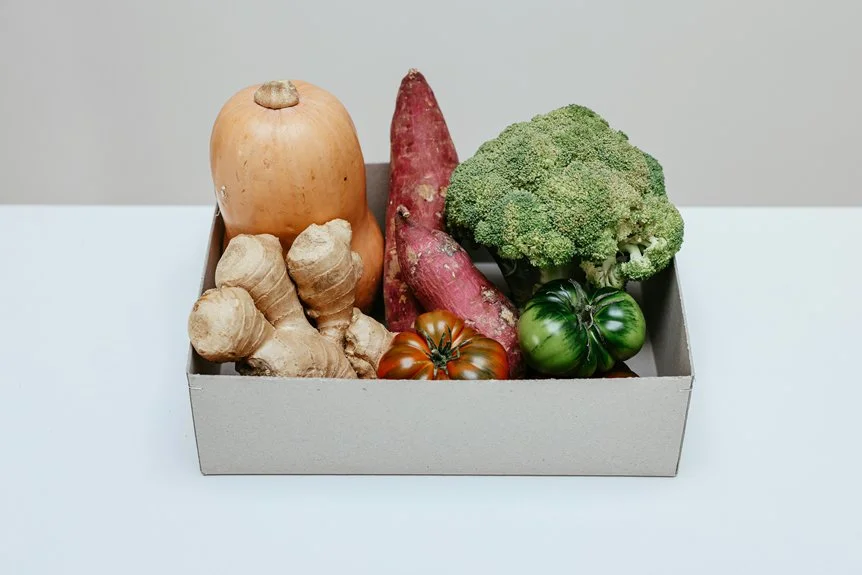
You’re probably tired of hearing about superfoods, right? But here’s the thing – fall actually delivers some serious nutritional powerhouses that won’t break your budget or require a PhD in cooking. I’ve spent the last three years experimenting with seasonal eating, and these 21 autumn gems have genuinely transformed how I fuel my body during the colder months. The best part? Most cost under $2 per pound, and the energy boost hits different than your usual supplements.
Key Takeaways
- Pumpkins and butternut squash are nutritional powerhouses that work well in oatmeal, hummus, mac and cheese, and chili.
- Brussels sprouts are cancer-fighting superfoods rich in vitamins C and K that support healthy hair growth when roasted or sautéed.
- Kale packs over 200% daily vitamin A requirement and can be made into chips, smoothies, or protein-packed quinoa salads.
- Pomegranates deliver 40% daily vitamin C needs while providing antioxidants that may inhibit cancer growth and improve cardiovascular health.
- Sweet potatoes offer fiber, vitamins, and antioxidants as a fall comfort food perfect for roasting, fries, or classic casseroles.
1. Pumpkins and Butternut Squash
When the leaves start changing colors, I get genuinely excited about two of fall’s most underrated superstars: pumpkins and butternut squash. These aren’t just decorative gourds sitting on your porch – they’re nutritional powerhouses that’ll transform your fall cooking game.
Both pumpkin and butternut squash pack serious fiber, beta-carotene, and vitamin A while keeping calories surprisingly low. I’ve discovered that pumpkin puree works magic in everything from morning oatmeal to unexpected places like hummus.
Meanwhile, roasted butternut squash elevates comfort foods like mac and cheese and chili to restaurant-quality status.
Try making pumpkin soup with sautéed onions, garlic, vegetable broth, and cream, then top it with roasted pumpkin seeds. Trust me, your taste buds will thank you for this seasonal upgrade.
After enjoying these warming fall meals, treat yourself to a relaxing soak with CBD bath bombs infused with lavender or chamomile to enhance your seasonal self-care routine.
2. Brussels Sprouts
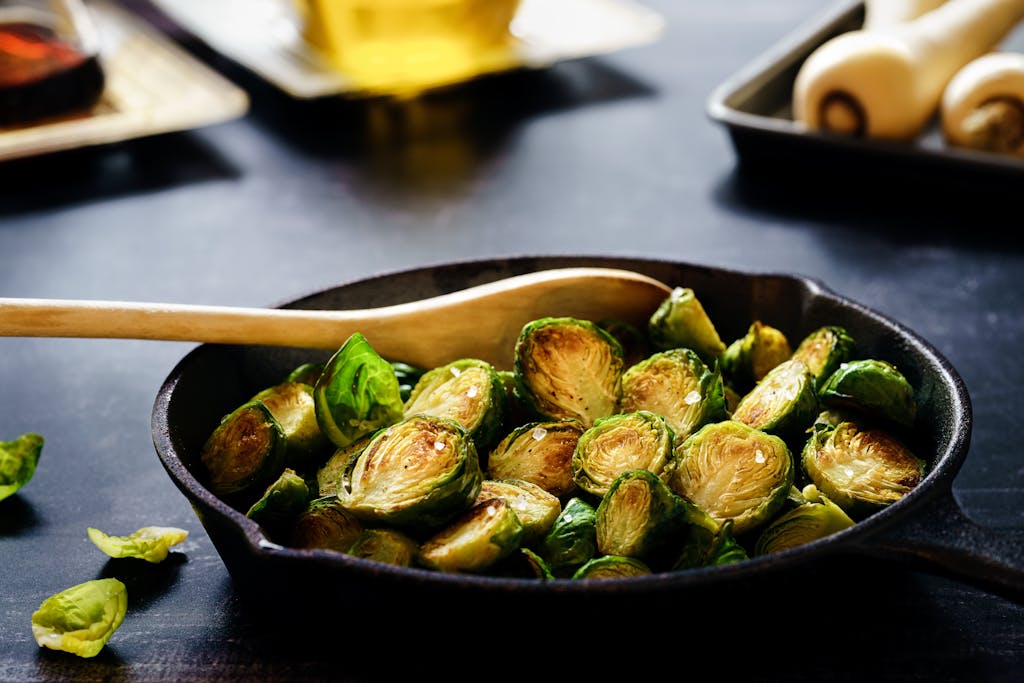
You may have written off Brussels sprouts as those mini-cabbages your mom forced you to eat, but these fall powerhouses pack serious nutritional punch with over 100% of your daily vitamin K in just one cup.
I’ll walk you through why they’re actually cancer-fighting superstars, show you three foolproof cooking methods that’ll make them taste amazing, and share my go-to recipes that turned my Brussels sprouts-hating family into believers.
Trust me, once you learn to roast them properly with bacon or balsamic glaze, you’ll ponder why you evaded them for so long.
Brussels sprouts are also rich in vitamin C, which supports healthy hair follicles and can contribute to stronger, more resilient hair growth.
Nutritional Benefits Overview
Brussels sprouts might look like tiny cabbages that got lost on their way to the salad bowl, but don’t let their quirky appearance fool you – these little green powerhouses pack a serious nutritional punch. You’re getting a massive dose of vitamins C and K in every bite, plus fiber that’ll keep your digestive system running like a well-oiled machine.
They’re loaded with vitamin B6 and folate, which your body craves for energy production and cell function. Here’s the real kicker: Brussels sprouts are packed with antioxidants and glucosinolates that may help protect against cancer. That’s some serious disease-fighting power wrapped up in a vegetable that’s smaller than your fist.
Cooking Methods Guide
Now that you know these little green gems are basically nature’s multivitamin, let’s talk about turning them into something you’ll actually want to eat. The secret weapon here is roasting – it transforms bitter Brussels sprouts into crispy, caramelized perfection. Toss them with olive oil, salt, and pepper, then roast at 400°F for 20-25 minutes until they’re golden brown.
Want to level up? Add diced bacon for that savory crunch that’ll make your taste buds do a happy dance. You can also sauté them with garlic and finish with maple syrup for sweet-savory magic. Don’t sleep on shredding them raw either – they’re fantastic in salads and slaws when you need that satisfying crunch.
Recipe Ideas
Ready to put those cooking techniques to work? Let’s turn Brussels sprouts into your new favorite healthy fall obsession. Start with the basics: toss them with olive oil, salt, and pepper, then roast until they’re crispy perfection. Trust me, this simple method converts even the biggest skeptics.
Want to level up? Add diced bacon for that indulgent twist that makes fall foods irresistible. The salty, smoky combo will have you questioning why you ever avoided these little green powerhouses.
For something different, try maple-roasted Brussels sprouts – the sweet caramelization transforms them into candy-like bites.
These recipes prove that eating healthy fall foods doesn’t mean sacrificing flavor. You’re building a foundation of nutritional excellence while actually enjoying every bite.
3. Kale
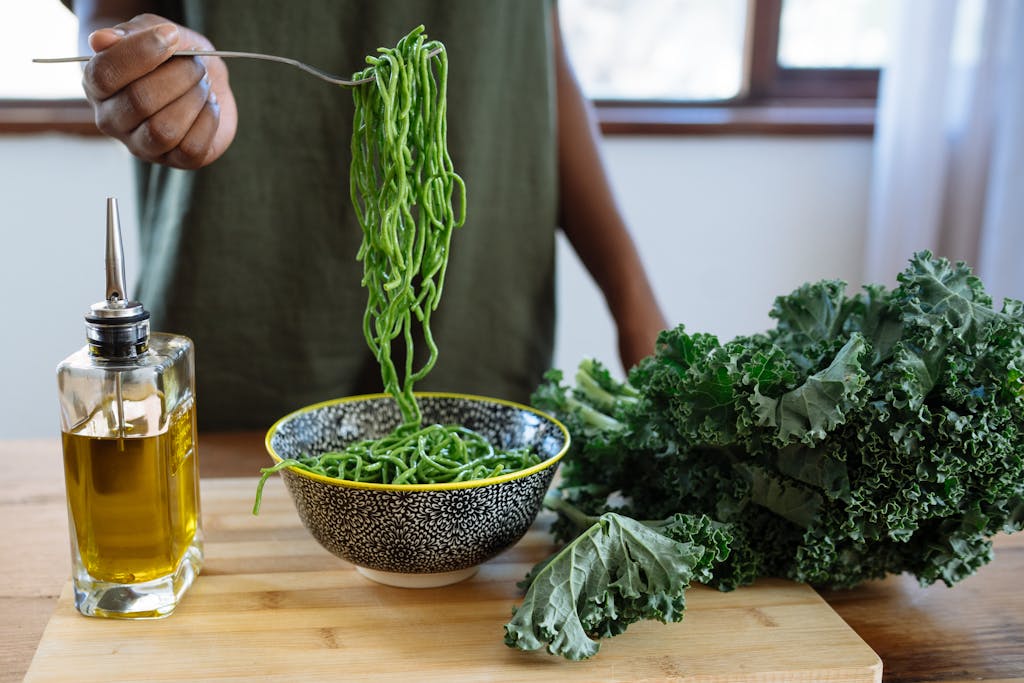
You may have walked past kale in the grocery store thinking it looks like decorative lettuce, but this leafy green packs more vitamins per cup than most people get in a week. I’ll break down exactly why kale deserves a spot on your fall shopping list, from its impressive 200% vitamin A content to simple ways you can actually make it taste good.
Whether you’re looking to boost your health or just want recipes that won’t make your family roll their eyes, kale’s got more versatility than you’d anticipate. Try adding fresh kale to a quinoa salad with black beans for a protein-packed meal that’s perfect for fall meal prep and weight management.
Nutritional Benefits Overview
Everyone knows that one leafy green makes nutritionists practically swoon with excitement, and that’s kale – the dark, slightly bitter superstar that’s absolutely loaded with nutrients your body craves. You’re getting a powerhouse source of vitamins when you add this fall superfood to your plate. We’re talking vitamins A, K, and C, plus calcium and potassium that’ll make your bones thank you later.
You get serious nutritional bang for your buck, which is exactly what you need when you’re trying to fuel your body for peak performance. Those vitamins aren’t just sitting there looking pretty either; they’re actively supporting your immune system, bone health, and energy levels throughout those demanding fall months.
Recipe Ideas Guide
Let’s face it – kale can taste like you’re chewing on your lawn if you don’t know how to work with it, but I’ve cracked the code on making this superfood actually delicious.
First, try roasting those tough leaves at 400°F for 12-15 minutes with olive oil and sea salt. You’ll get crispy kale chips that’ll make you forget potato chips exist. I also throw kale into smoothies with pineapple and banana – the fruit masks that earthy bite completely.
Here’s where it gets interesting: you can sneak kale into baked goods like muffins and brownies. Just blend it first, then fold it into your batter. Your family won’t even notice they’re eating their greens while demolishing chocolate chip muffins.
4. Pomegranates

When I first tried to crack open a pomegranate, I honestly thought I’d need a hammer and safety goggles. But trust me, mastering this ruby-red powerhouse is worth the initial mess on your kitchen counter.
You’re getting serious nutritional ammunition here. One pomegranate delivers over 40% of your daily vitamin C needs, which means your immune system gets the backup it deserves during cold season. The antioxidants, especially those polyphenols, work like your personal bodyguards against inflammation and chronic diseases.
Those jewel-like arils pack fiber for heart health, plus unique compounds called punicalagins that may actually inhibit cancer cell growth. Studies show pomegranates can lower blood pressure and improve blood flow too. You’re literally eating your way to better cardiovascular health.
After enjoying this antioxidant-rich fruit, consider winding down with a relaxing soak using essential oil bath salts to complete your wellness routine.
5. Sweet Potatoes
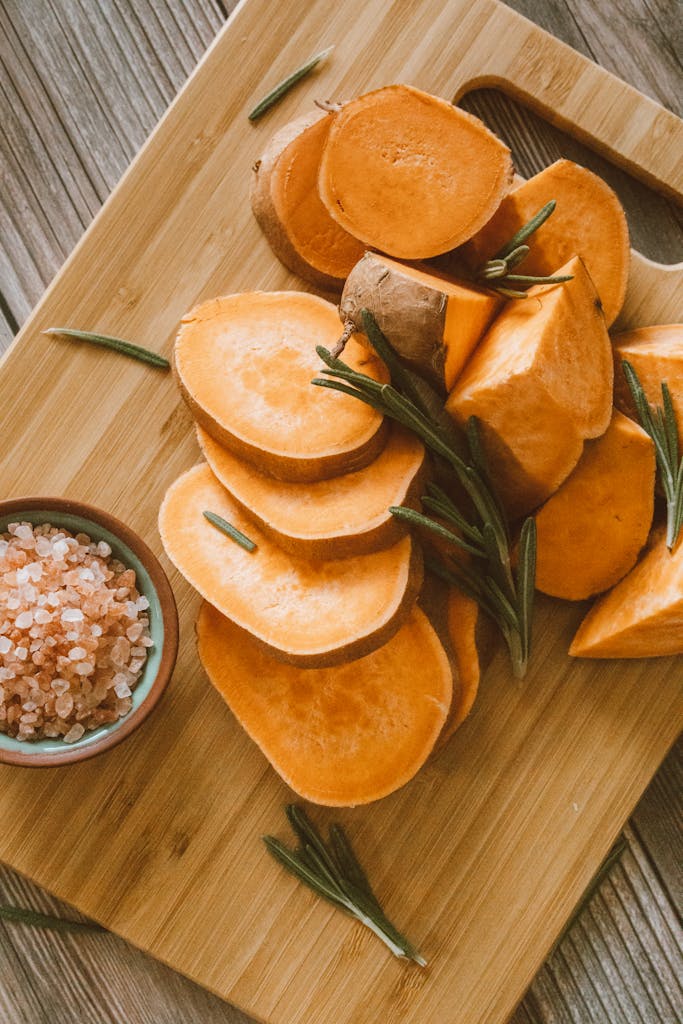
Speaking of fall favorites that don’t require protective gear, sweet potatoes became my go-to comfort food after I realized they’re basically nature’s multivitamin wrapped in orange goodness. You’ll get over 400% of your daily vitamin A from one medium sweet potato, which honestly sounds too good to be true.
Sweet potatoes deserve space on your power plate:
- Fiber champion – Over 4 grams per potato keeps your digestive system running smoothly
- Blood sugar ally – Complex carbs provide sustained energy without the crash
- Cancer-fighting potential – Beta-carotene antioxidants support your immune system
- Versatility winner – Roast them, mash them, or throw them in everything
They’re proof that healthy doesn’t mean boring. Try incorporating diced sweet potatoes into a protein-rich breakfast hash with black beans and scrambled eggs for a satisfying morning meal that delivers both complex carbs and sustained energy.
6. Figs
Figs became my unexpected obsession after I discovered them at a farmer’s market three years ago, mostly because I’d been walking past them in grocery stores thinking they were some fancy fruit I couldn’t afford.
Sometimes the best discoveries happen when you stop assuming something is out of reach and just give it a try.
Turns out, they’re powerhouse snacks that’ll fuel your ambitions without breaking the bank.
Each fig packs 4 grams of fiber, which means you’ll stay satisfied longer and avoid those afternoon energy crashes that derail your productivity. You’re also getting serious antioxidants that fight inflammation while supporting your body’s recovery from intense workdays.
The manganese content supports bone health and metabolism, keeping you strong for whatever challenges you’re tackling. Eat them fresh, toss dried ones in salads, or blend them into smoothies for natural sweetness that doesn’t require processed sugar.
When you’re tracking your daily energy levels, you’ll notice that figs provide sustained fuel without the crash that comes from processed snacks.
7. Beets
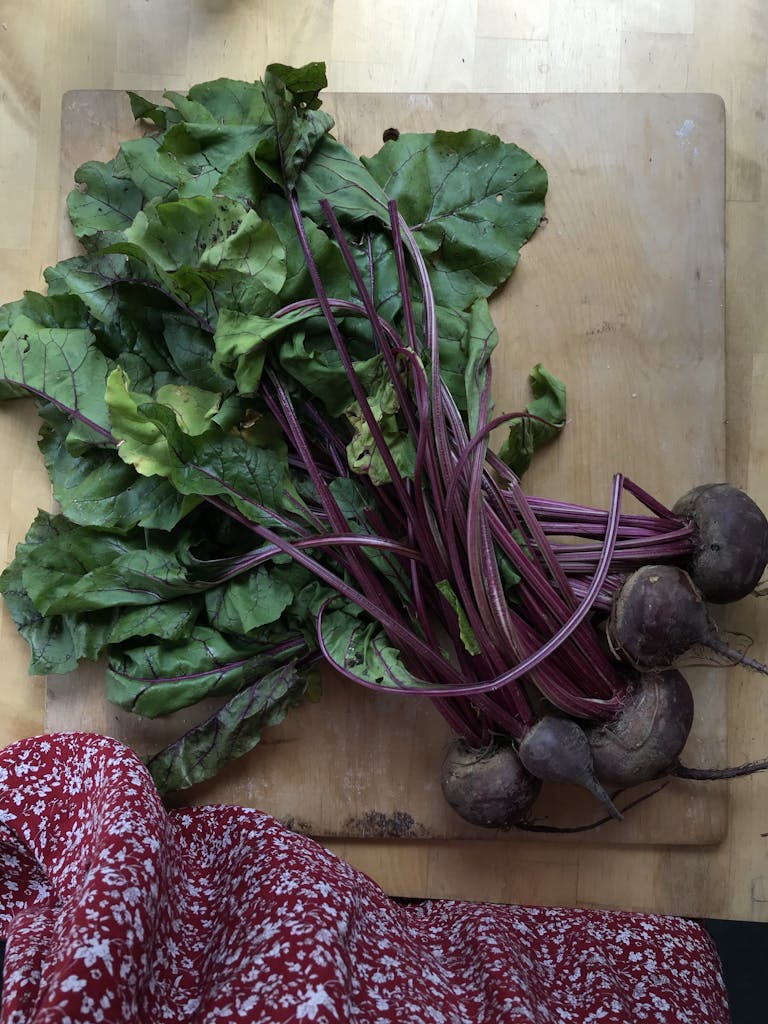
In all likelihood, you have strolled past those deep red, dirt-covered beets at the grocery store a hundred times, considering them too peculiar or untidy to bother with. I can assure you, I was once in the same position until I discovered that these earthy gems pack more nutritional punch than most vegetables in your cart, plus they’re way easier to prepare than you’d imagine.
Let’s break down why beets deserve a spot on your fall shopping list, and I’ll share some simple tricks for storing and cooking them without turning your kitchen into a crime scene. Just like the growing trend toward wellness focused choices in other lifestyle areas, incorporating nutrient-dense beets into your diet aligns perfectly with seasonal eating patterns that support your overall health.
Nutritional Benefits Overview
While most people think of beets as that weird, dirt-tasting vegetable they avoided as kids, these ruby-red roots pack more nutritional punch than almost any other fall produce. You’re looking at a powerhouse that’ll transform your health game completely.
Here’s what makes beets your secret weapon:
- Fiber and digestive dominance – supports gut health and keeps you regular
- Betalain antioxidants – fight inflammation and cellular damage like champions
- Natural nitrates – lower blood pressure and boost athletic performance enormously
- Manganese motherload – one cup delivers over 30% of your daily needs
You can roast them for sweetness, blend them into smoothies for convenience, or grate them raw into salads for maximum crunch. Don’t let childhood memories stop you from claiming this nutritional crown jewel.
Preparation and Storage
The biggest mistake I made with beets for years was treating them like some complicated gourmet ingredient that required a culinary degree to handle properly. Truth is, you’ve got three simple options that’ll transform your relationship with this powerhouse vegetable. Roast them whole for 45 minutes, steam them for quick weeknight dinners, or grate them raw into salads for instant crunch.
Don’t toss those leafy greens either – they’re nutritional gold that sautés beautifully in two minutes flat. Store your fresh produce in the crisper drawer, and it’ll stay crisp for weeks. Pre-cooked packages save you precious time, while freezing extends their shelf life indefinitely. Master these basics, and you’ll dominate beetroot preparation.
8. Apples
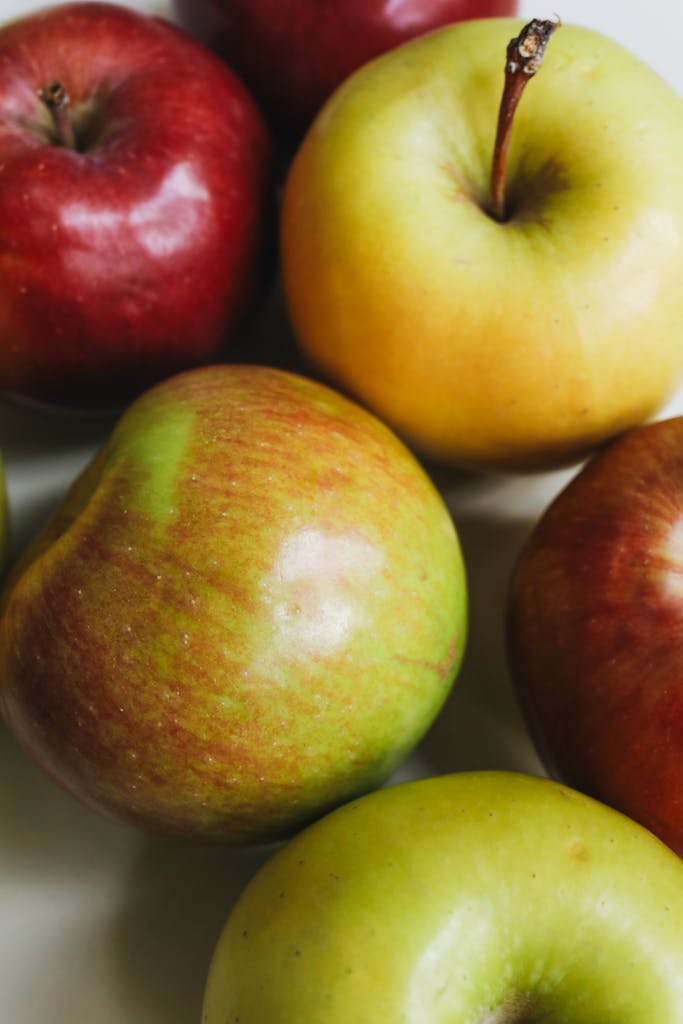
As autumn arrives with its crisp air and colorful leaves, apples become the undisputed champions of fall superfoods. These fiber-packed powerhouses don’t just taste amazing – they’re working overtime to boost your health and give you that competitive edge you’re craving.
Apples deliver serious nutritional punch with their vitamin C content and antioxidants, helping you fight off those annoying seasonal sniffles. Here’s why you need to make apples your go-to fall fuel:
- Digestive Support – That fiber keeps your system running smoothly
- Immune Defense – Vitamin C helps you stay strong during cold season
- Endless Variety – From tart Granny Smiths to sweet Honeycrisps
- Versatile Usage – Perfect for snacking, baking, or adding to savory dishes
Take advantage of apple-picking season to stock up on fresh, local varieties. Beyond their physical benefits, incorporating apples into your daily routine can become a simple gratitude practice as you appreciate the seasonal abundance and nourishment they provide.
9. Mustard Greens
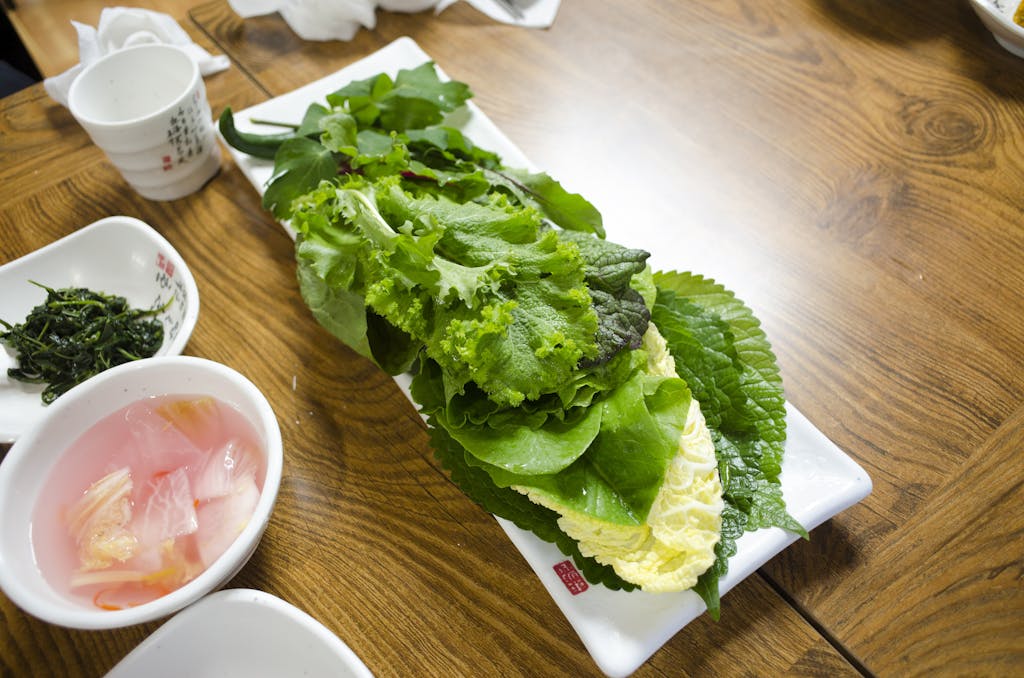
Moving beyond the orchard favorites, mustard greens pack a nutritional wallop that’ll make you wonder why you’ve been ignoring these leafy powerhouses for so long. These cruciferous vegetables don’t mess around when it comes to delivering serious health benefits. You’re getting over 500% of your daily vitamin K in just one cup, plus fiber and antioxidants that your body craves.
What really sets mustard greens apart are their antioxidant properties, specifically sulforaphane, which fights skin aging and environmental damage. The glucosinolates they contain have researchers excited about their cancer-fighting potential. Don’t let their peppery bite intimidate you – sauté them with garlic, toss them into soups, or add raw leaves to salads for a nutritional boost that’ll make you feel invincible. Remember, incorporating these nutritional powerhouses into your daily routine is part of how marginal gains compound into extraordinary health transformations over time.
10. Fennel
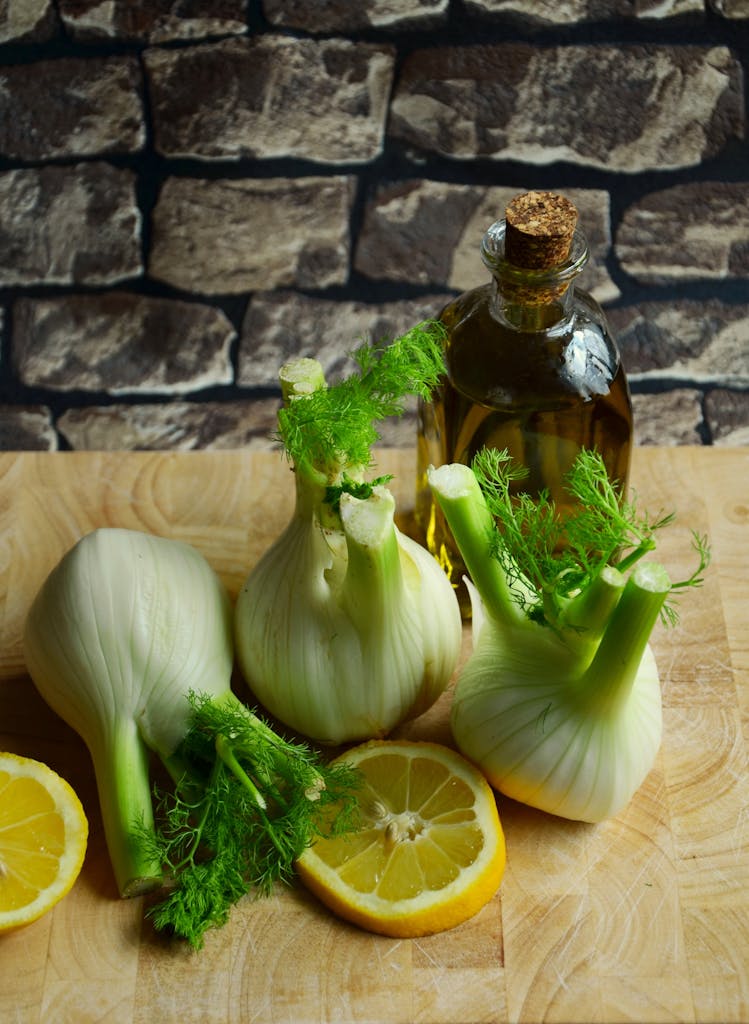
Why haven’t more people discovered fennel’s crisp, invigorating crunch that tastes like a gentle licorice kiss? You’re missing out on a nutritional powerhouse that’ll transform your fall cooking game. This underrated vegetable packs serious vitamin C and fiber while delivering anti-inflammatory compounds that fight for your health.
Fennel’s crisp, licorice-kissed crunch delivers a nutritional powerhouse that’ll revolutionize your fall cooking with anti-inflammatory benefits.
Whole plant edibility – bulb, stalks, and fronds all work in recipes
Versatile preparation – raw in salads, roasted, or sautéed into pastas
Perfect fall pairings – complements seafood, chicken, apples, and citrus beautifully
Inflammation fighter – contains anethole, a compound with potential cancer-fighting properties
Don’t let fennel’s unusual appearance intimidate you. Once you master this crispy, aromatic vegetable, you’ll wonder how you cooked without it. Like many successful niche market products, fennel serves a specific audience of health-conscious cooks who appreciate its unique flavor profile and versatility.
11. Broccoli Rabe
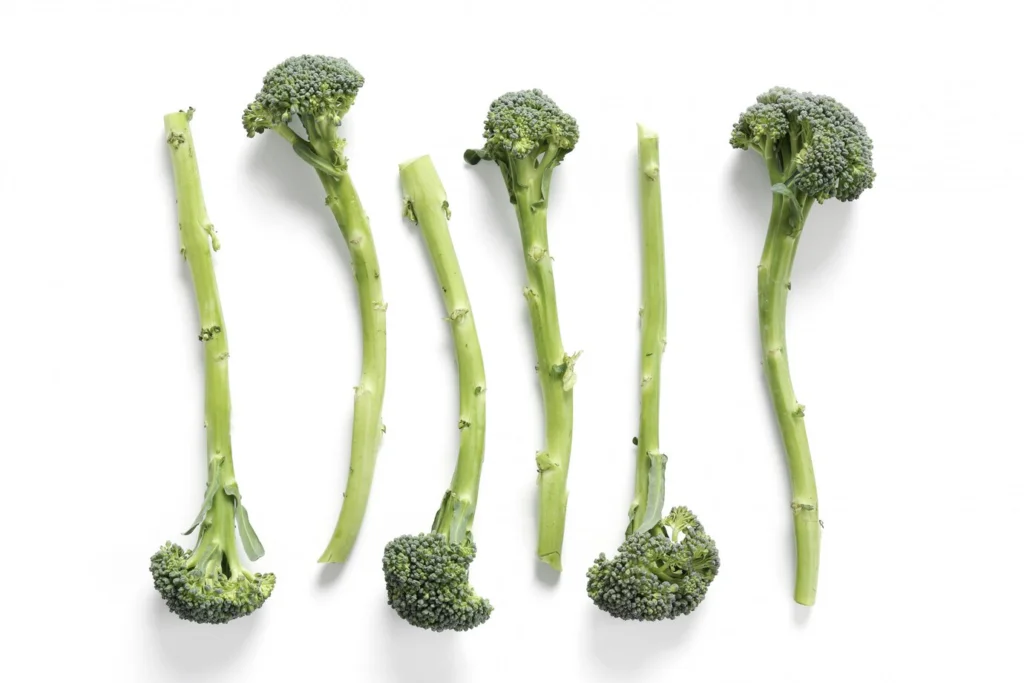
You’ll love broccoli rabe if you’re looking for a powerhouse green that doesn’t mess around, packing vitamins A, C, and K plus cancer-fighting compounds into every bitter, peppery bite. I’ve found that this leafy superhero delivers serious iron and carotenoid benefits that’ll keep your immune system running strong through fall’s sniffles and sneezes.
The best part is you can toss it with garlic and olive oil for a quick sauté, or throw it raw into salads when you’re feeling adventurous enough to handle its feisty kick.
Nutrient-Rich Immune Support
Broccoli rabe might look like broccoli’s weird cousin at the family reunion, but don’t let its leafy, slightly bitter appearance fool you. This powerhouse vegetable delivers serious antioxidant power that’ll make your immune system thank you later.
You’re getting vitamin C that helps your body absorb iron more effectively, plus vitamin A, lutein, and zeaxanthin working together like a dream team. Here’s what makes broccoli rabe your secret weapon:
- Fights chronic diseases with protective carotenoids
- Supports immune health through multiple vitamins
- Belongs to the cancer-fighting cruciferous family
- Pairs perfectly with sausage to balance bitterness
The slightly bitter taste means it’s working hard for you, delivering nutrients that keep you strong and healthy throughout fall’s challenges.
Iron and Carotenoid Benefits
When your energy feels lower than your motivation on a Monday morning, iron deficiency might be the sneaky culprit behind your afternoon crashes. Broccoli rabe delivers a solid iron punch, plus vitamin C that actually helps your body absorb that iron—it’s like having a personal assistant for your nutrients.
But here’s where this leafy green really flexes: it’s loaded with carotenoids that work overtime protecting you from chronic diseases. The lutein and zeaxanthin specifically target your eyes, building a fortress against age-related damage while you’re busy conquering your daily goals.
I’ll admit, broccoli rabe tastes bitter enough to make you question your life choices, but pair it with some spicy sausage and you’ve got yourself a power meal that actually tastes incredible.
Cooking and Pairing Tips
Three simple tricks can transform broccoli rabe from “edible punishment” to something you’ll actually crave on your grocery list. The bitter bite that makes most people wince actually becomes your secret weapon when you know how to tame it.
First, blanch those leafy greens in boiling water for two minutes before cooking. This cuts the bitterness in half, making room for actual flavor to emerge.
Chop smaller pieces to distribute flavor evenly throughout your dish
Partner with garlic, olive oil, and Italian sausage for classic combinations
Add to pasta dishes or frittatas for easy weeknight meals
Finish with parmesan or lemon juice to balance any remaining bitterness
Your farmers markets carry the freshest bunches, and mastering broccoli rabe enhances your healthy living game.
12. Jicama
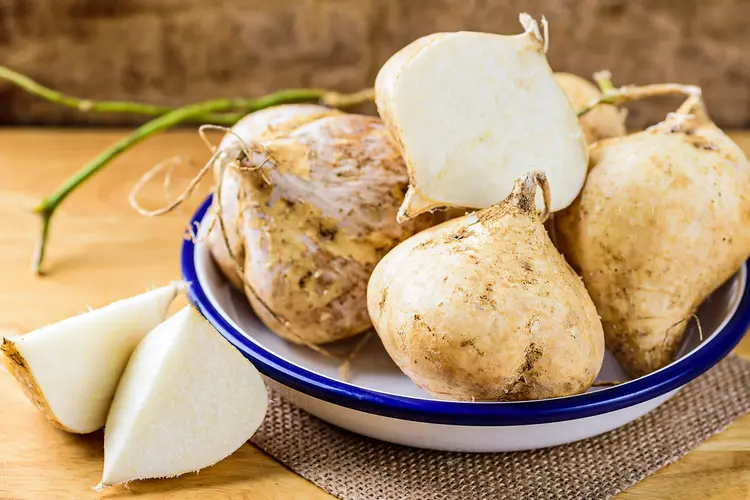
Although one has likely walked past jicama dozens of times in the produce section, this humble root vegetable deserves a spot in your fall shopping cart. You’ll discover it’s an excellent source of fiber, packing over 6 grams per cup, which means your digestive system will thank you later.
Plus, it’s high vitamin C content gives your immune system the boost it needs as temperatures drop.
What makes jicama truly powerful is its versatility. You can slice it raw for a crunchy snack, toss it into salads for texture, or roast it as healthy fries. The prebiotic fiber feeds your gut’s beneficial bacteria, creating a stronger foundation for overall health. It’s low-calorie but nutrient-dense, making it perfect for maintaining energy during busy fall schedules.
13. Delicata Squash

In all likelihood, you have likely walked past delicata squash at the grocery store dozens of times, thinking it looked too fancy or complicated to bother with. Trust me, I used to do the same thing until I discovered this cream-colored, striped beauty packs over 100% of your daily vitamin A needs in just one cup.
Let’s break down why this fall superfood deserves a spot in your kitchen, plus I’ll share the ridiculously simple cooking methods that’ll make you wonder why you waited so long to try it.
Nutritional Benefits Overview
When I first discovered delicata squash at my local farmer’s market last October, I honestly thought it looked like a fancy zucchini that had gotten a little too ambitious. Boy, was I wrong about this nutritional powerhouse!
This winter squash delivers serious health benefits that’ll fuel your body like premium gasoline.
Vitamins A and C boost your immune system and skin health. Fiber and vitamin C support digestion and cellular repair. Eye-protecting carotenoids like lutein guard against vision problems. 15% daily magnesium strengthens bones, heart, and muscles per cup.
You don’t need to peel this beauty either – the thin skin adds extra fiber while saving you prep time. It’s naturally sweet enough for desserts yet savory enough for dinner.
Simple Cooking Methods
Since I’m admittedly terrible at complicated kitchen techniques, I was thrilled to discover that delicata squash is basically foolproof to cook. You don’t even need to peel this beauty—the skin’s completely edible, which saves you precious time and effort.
These simple cooking methods will transform your kitchen game. Just slice it into half-moons, drizzle with olive oil, salt, and pepper, then roast at 400°F until tender. I’m talking caramelized perfection in about 25 minutes.
Once you’ve mastered roasted delicata squash, you’ll discover endless possibilities. Mash it for creamy soups, toss it in salads, or create my favorite side dish with dried cranberries, pecans, and maple vinaigrette. You’ll feel like a culinary genius.
Recipe Ideas
Kitchen creativity flows naturally once you’ve nailed that basic roasting technique, and I’ve spent the last month experimenting with delicata squash in ways that honestly surprised me. You’ll transform your fall cooking game with these power moves:
- Breakfast Bowl Domination: Roasted rings over Greek yogurt with honey and pecans
- Soup Fusion: Blend roasted squash with pumpkin puree for double the flavor punch
- Pasta Power Play: Toss caramelized rings with sage butter and parmesan
- Salad Game Changer: Raw shaved delicata adds unexpected crunch to winter greens
That breakfast bowl became my weekday secret weapon, prepping five portions every Sunday for $12 total. The soup combo? Pure genius that’ll make your guests think you’re some culinary mastermind when really you just threw two ingredients in a blender.
14. Cranberries
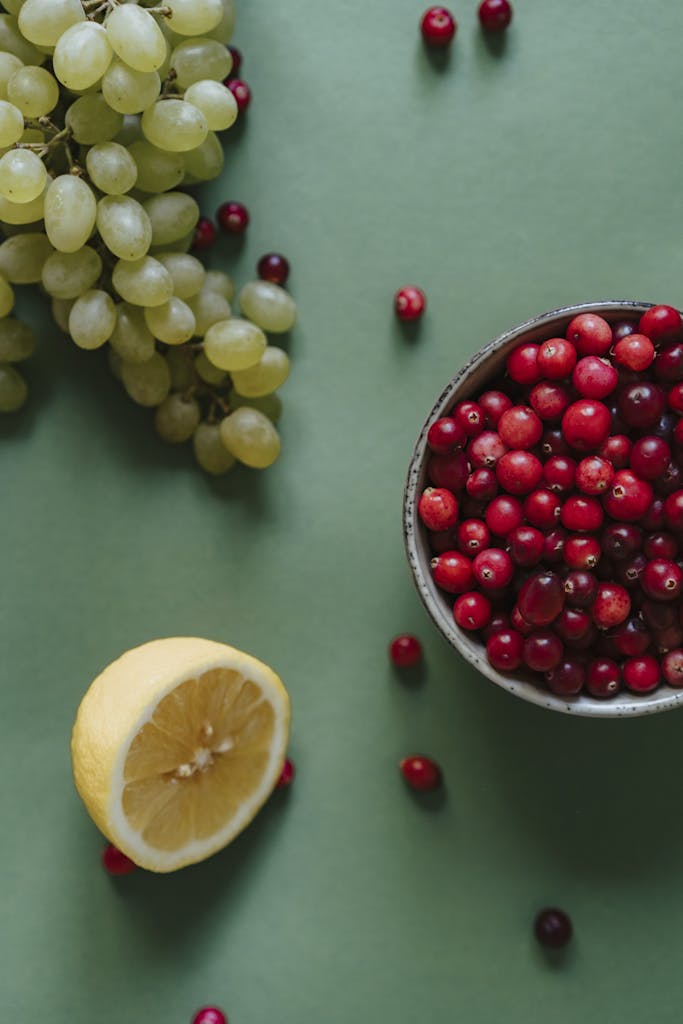
Cranberries might look like tiny red marbles, but don’t let their size fool you – these little powerhouses pack more health benefits than I ever imagined when I first started adding them to my morning oatmeal three years ago.
This fall fruit delivers serious antioxidants and vitamin C that’ll strengthen your immune system right when cold season hits. You’ll also get proanthocyanidins, which sound fancy but basically help prevent those annoying UTIs by stopping bacteria from sticking to your bladder wall.
Plus, cranberries boost heart health and provide fiber for better digestion. Whether you choose fresh, dried, or juice form, these ruby gems give you multiple ways to power up your health game this season.
15. Persimmons
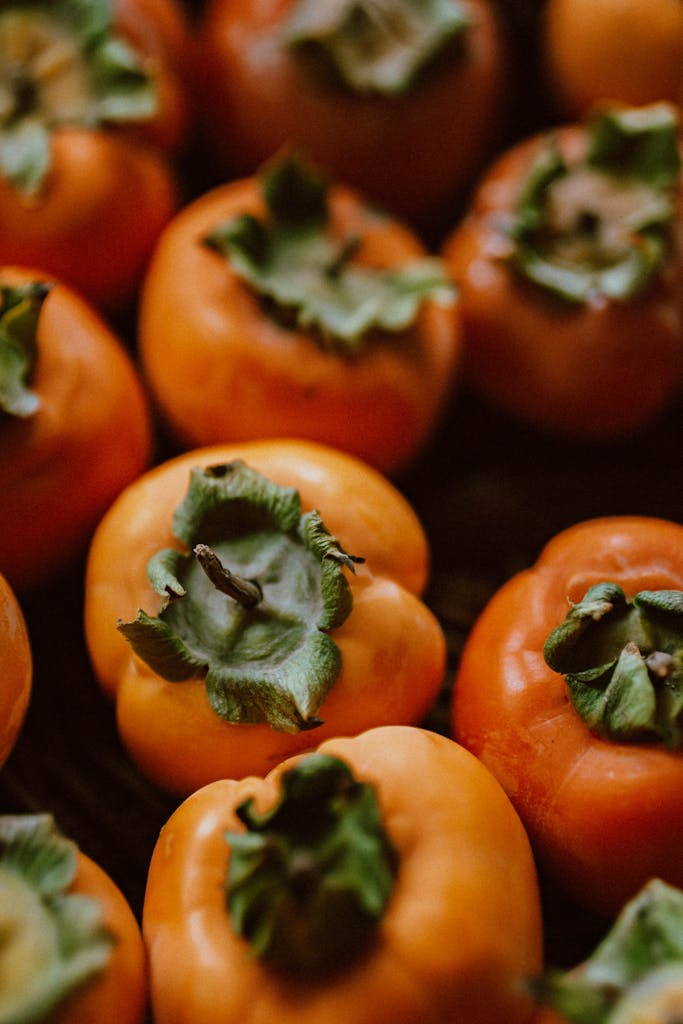
While cranberries get all the attention for their health benefits, I’ve been secretly obsessed with persimmons for the past two years – and honestly, they’re the underdog fruit that deserves way more love.
Persimmons are the underrated nutritional powerhouse that puts trendy superfruits to shame – and it’s time they got the recognition they deserve.
This fall favorite packs serious nutritional power that’ll make you ditch those processed snacks for good. One medium persimmon delivers around 6 grams of fiber – that’s nearly 25% of your daily needs right there.
Here’s why you need persimmons in your life:
- Rich in fiber to keep you satisfied longer
- Loaded with vitamins A, C, and B6 for immune support
- Low calories, high natural sweetness beats candy every time
- Versatile enough for salads, baking, or eating fresh
Just ensure – wait until they’re fully ripe unless you enjoy that chalky mouth experience!
16. Cauliflower

Although cauliflower used to be the boring white vegetable I’d push around my plate as a kid, I’ve completely changed my tune after discovering it’s basically a nutritional powerhouse disguised as bland food. This cruciferous champion packs serious cancer-fighting properties that’ll make you feel invincible.
Just 100 grams delivers 80% of your daily vitamin C requirements, plus all the manganese you need. That’s like getting a multivitamin in vegetable form. As an excellent source of vitamin C and manganese, cauliflower floods your system with antioxidants that combat inflammation.
I’ve roasted it, steamed it, even made cauliflower rice, and honestly, it’s become my secret weapon for staying healthy during busy seasons.
17. Parsnips

When I first spotted parsnips at the grocery store, I honestly thought they were just sad, pale carrots that had given up on life. Boy, was I wrong! These fall powerhouses pack serious nutritional punch that’ll fuel your ambitions.
Parsnips deliver essential nutrients your body craves for peak performance:
- Fiber content that keeps you satisfied and focused during long work sessions
- Vitamins C and K plus manganese and potassium for sustained energy
- Anti-cancer compounds like falcarinol that protect your investment in health
- Sweet, nutty flavor that intensifies when roasted to perfection
I’ve discovered they’re incredibly versatile – mash them like potatoes, toss into soups, or roast with other vegetables. Their natural sweetness satisfies cravings while their fiber keeps you full, preventing those afternoon energy crashes that derail productivity.
18. Pears
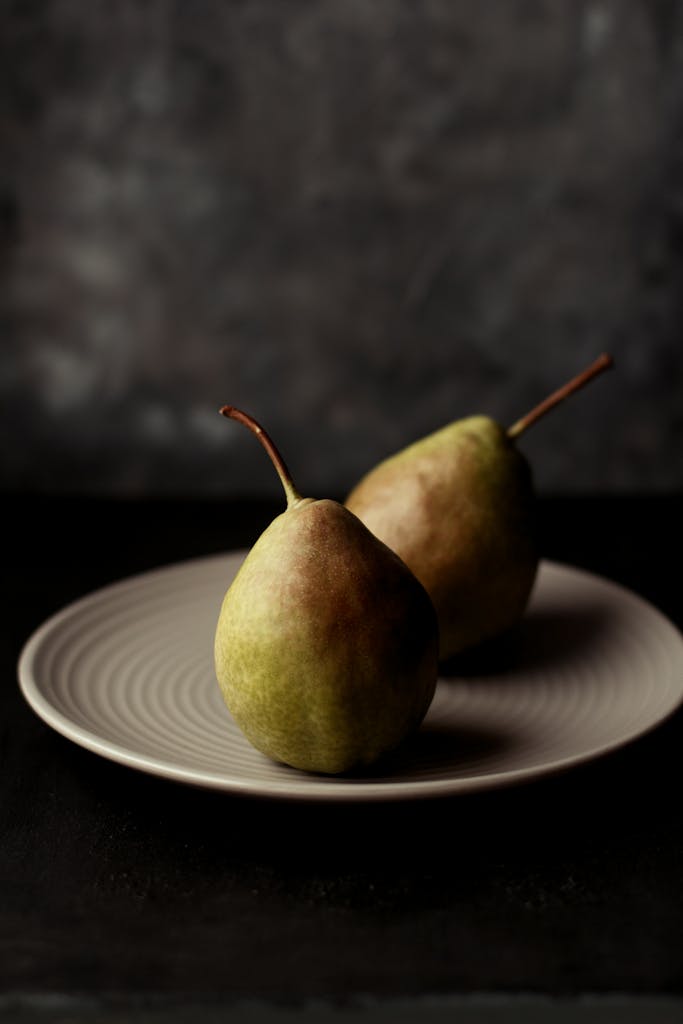
Here’s the thing about pears – I used to think they were just apples having an identity crisis, but these teardrop-shaped beauties have completely won me over this fall season. You’re getting serious bang for your buck with pears, and I mean that literally. One medium pear delivers 6 grams of fiber, which is nearly a quarter of your daily needs. That’s more fiber than most cereals give you, honestly.
What really sealed the deal for me was discovering how versatile they are. I’ve been tossing chopped pears into my power salads, baking them into muffins for meal prep, and eating them fresh when I need that afternoon energy boost. Plus, they’re packed with vitamin C and potassium – nutrients that keep you sharp and energized.
19. Mushrooms
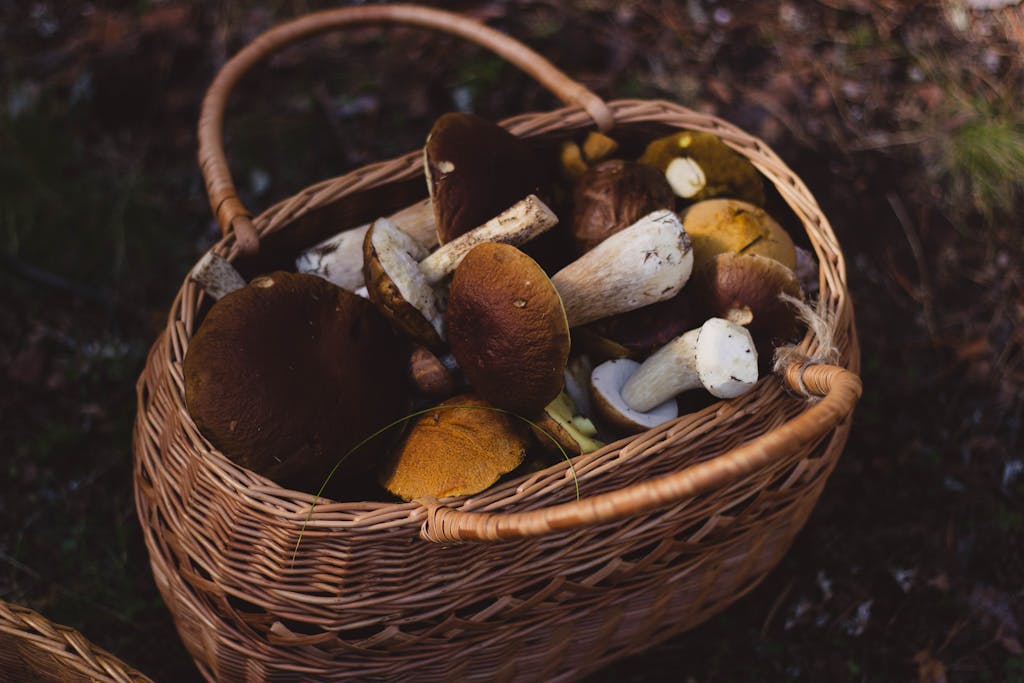
Mushrooms used to intimidate me because, let’s be honest, they’re basically edible fungi and that sounds weird when you really think about it. But now I’m obsessed with these nutritional powerhouses that’ll supercharge your immune system better than any vitamin C supplement.
Shiitake and oyster varieties boost immunity like nature’s personal bodyguards. Vitamin D content gives you what most plant foods can’t deliver. B vitamins and selenium fuel your body’s energy production systems. Portobello caps replace meat patties without sacrificing flavor or satisfaction.
I’ve discovered that sautéing mushrooms with garlic transforms any boring soup into restaurant-quality comfort food. They’re your secret weapon for dominating fall nutrition goals.
20. Winter Squash Varieties
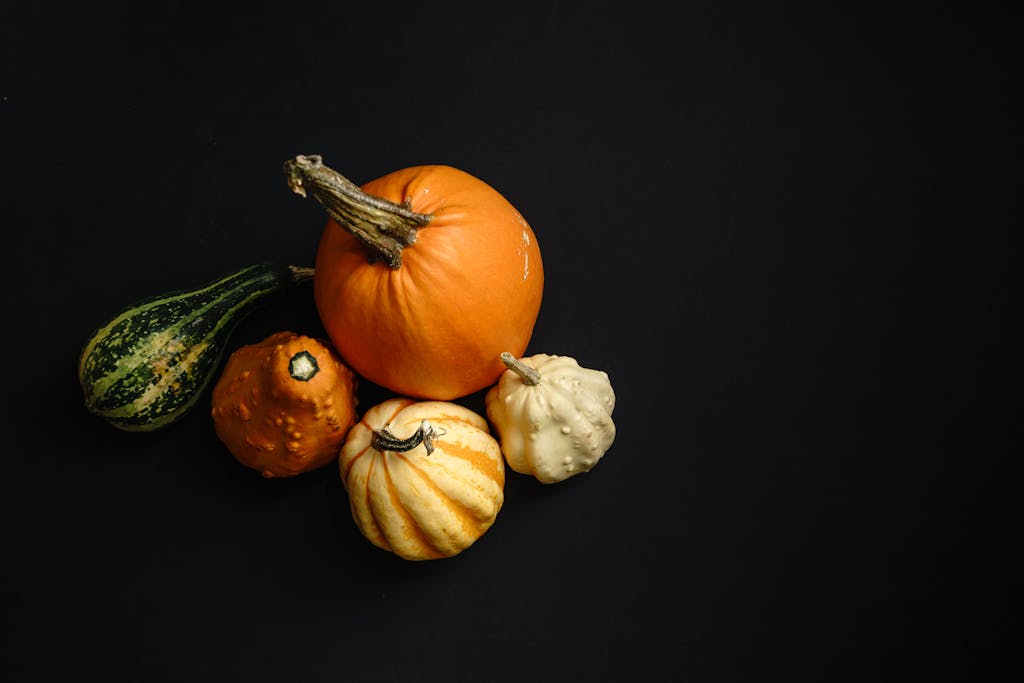
Speaking of immune-boosting superstars, winter squash deserves just as much respect as those fancy mushrooms, but somehow it gets stuck playing second fiddle to basic pumpkins every fall. You’re missing out on serious nutritional firepower when you skip these varieties.
Butternut, delicata, acorn, spaghetti, kabocha, and honeynut squash pack unique flavors and textures that’ll transform your fall cooking game. That vibrant orange color isn’t just Instagram-worthy—it’s screaming “nutrient-dense powerhouse” loaded with fiber, vitamin A, vitamin C, potassium, and magnesium.
Here’s what really sets winter squash apart: lutein and zeaxanthin, two carotenoids that protect your eyes from digital strain and age-related damage. You’ll literally see the benefits while dominating your daily tasks with sharper vision and sustained energy.
21. Collard Greens
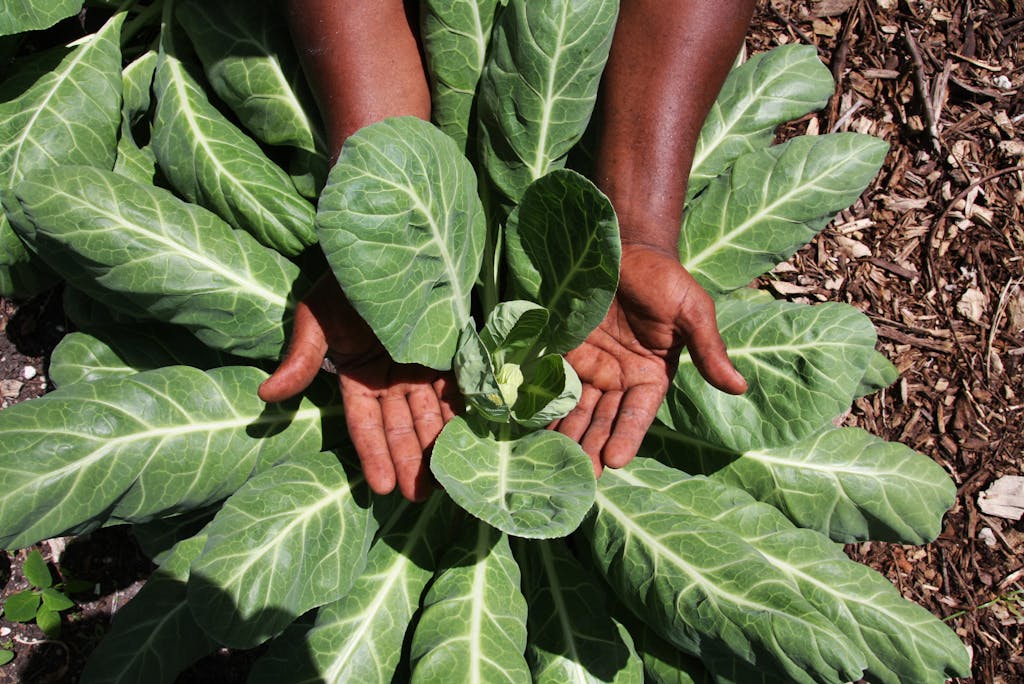
While everyone’s obsessing over kale chips and spinach smoothies, collard greens sit quietly in the corner like the underappreciated friend who’d actually help you move.
These powerhouse leaves pack serious nutritional punch that’ll fuel your ambitions. You’re getting vitamin C levels that boost your immune system, plus they’re rich in vitamin A and K for exceptional performance.
Sulforaphane compound fights cancer like a bodyguard, calcium content strengthens bones better than dairy, magnesium powers muscle and nerve function, and fiber keeps your digestive system running smoothly.
You can sauté them with garlic, steam them lightly, or toss raw leaves into salads. They’re cheaper than trendy superfoods but deliver twice the results.
Conclusion
You’ve got 21 amazing fall superfoods at your fingertips now, so there’s no excuse for boring meals this season. Start with just two or three favorites—maybe roasted Brussels sprouts and sweet potato fries—then gradually add more variety. Your wallet won’t break, your taste buds will thank you, and you’ll actually look forward to cooking again. Trust me, once you try crispy kale chips, you’ll wonder why you waited so long.




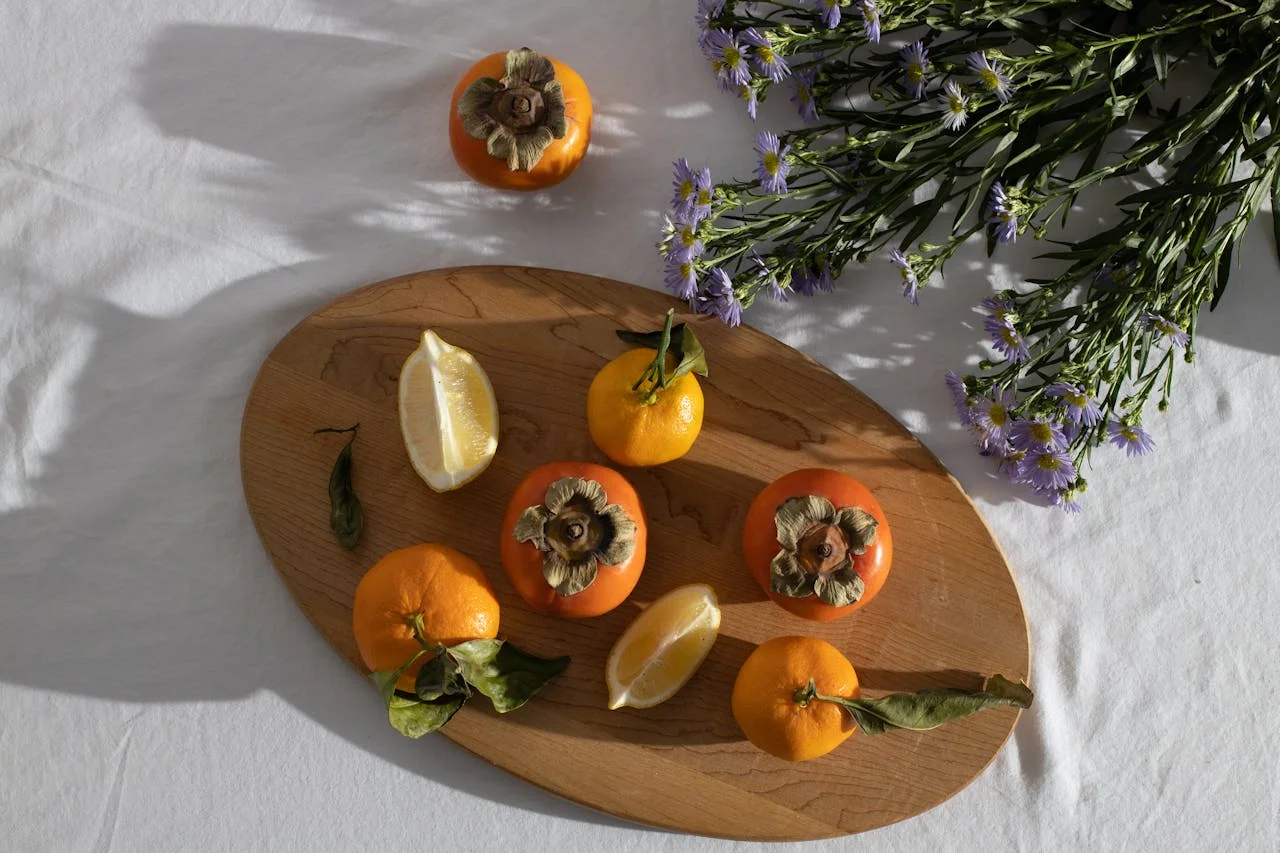
Pingback: 18 Daily Habits That Give You Natural Glow and Energy